| The solid azimuth/altitude instruments at the Jaipur Observatory | |
| Digansa Yantra - an azimuth instrument | |
|
Construction The instrument consists of a central circular pillar 1 m. high at the centre of two concentric circular walls. The first is also 1 m. high and some 5 m. in diameter. The second is some 2 m. high and 8 m. in diameter. This instrument has two cross-wires running north-south and east-west (not shown in the pictures) which support a small saure metal plate with a circular hole at its centre. Both circular walls have marble tops graduated in degrees and decimals. Use: The azimuth of the Sun can be measured by strtching a thread from the knob on the cnetral pillar to either of the circular walls, and keeping it taut with a weight. The thread is moved round until its shadow coincides with the spot of light passing through the hole at the centre of the cross-wires. The azimuth of the sun can then be read directly off the scale. To determine the azimuth of stars and planets at night, the observer lies odwn on the floor, and moves until the particular star of planet appears between the circular hole at the interetion of the cross-wires. Again, a thread is tied to the central knob and taken over the top of one of the circular walls and kept taut with## a weight. The thread is moved round until it is exactly between the eye of the observer and the circular hole. The azimuth can again be read directly from the scale. |
|
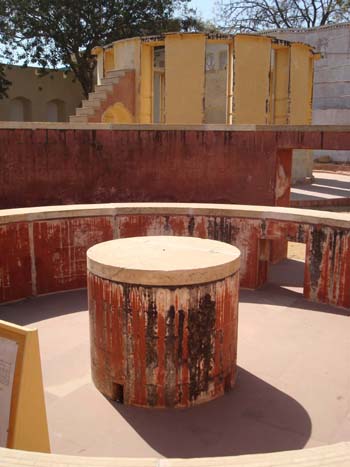 |
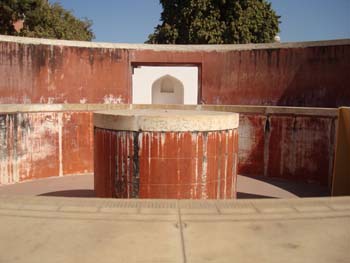 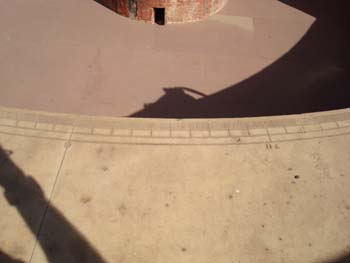 |
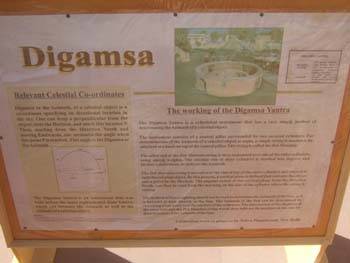 |
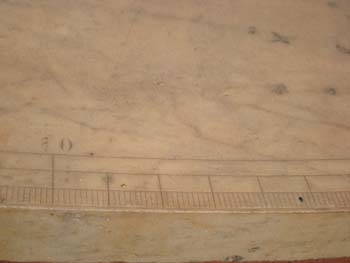 |
| Ram Yantra - an azimuth/altitude instrument | |
|
Construction: This instrument consists of two circular buildings with an outer ring of 12 upright stone slabs, each one connected to the center of the instrument by a horizontal triangular slab fixed some three feet above the ground. At the centre of the circle is fixed a vertical rod of the same height as the outer ring of stone slabs. The length of the triangular slabs is the same as the height of the verticals above them, so that the angle from the top of vertical slab to the centre point of the traingular slabs is 45°. The two buildings may appear to be identical, but they are in fact complementary, in that the triangular slabs are oriented from 0° in one instrument and from 30° in the other. The shadow of the central rod thus appears on one instrument at the time it vanishes from the other. Use: The azimuth of the sun cn be read directly from the radial markings on the triangular slabs. The tangent of the altitude can be calculated from the shadow length on the triangular slabs (when the sun is high in the sky) or the (height less the shadopw length) on the vertical slab (when the sun is lower in the sky). When the shadow falls on the joint between the vertical slab and the triangular slab, the altitude is 45°. The instruments are thus a substantial improvement in deign compared with Digamsa, whch will only meaure the azimuth and not the altitude. The shadow of the central rod has a noticeable penumbra which makes it difficult to determine exactly where the top of the shadow is. The accuracy and repeatability of readings can be improved by holding some uitable thin object close to the scale; when its shadow is in the penumbra, it shows a very clear shadow against the hazy shadow of the penumbra (as shown in the right hand picture), but when it is in the umbra, there is no shadow at all (as shown in the left hand picture)
|
|
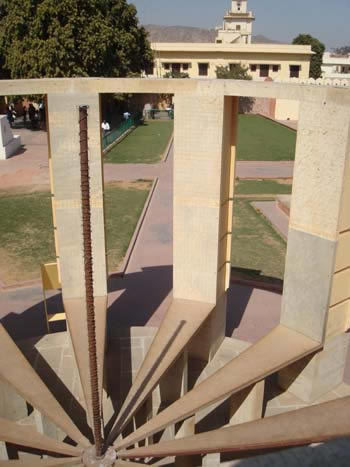 |
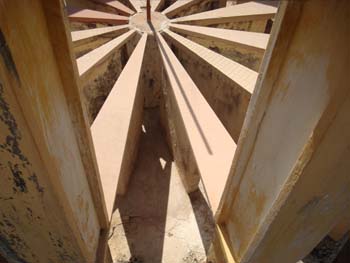 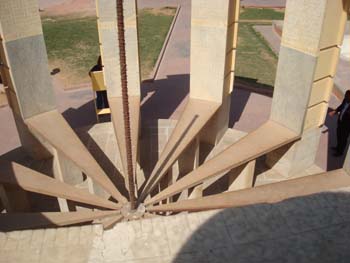 |
 |
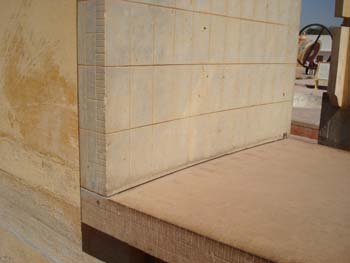 |
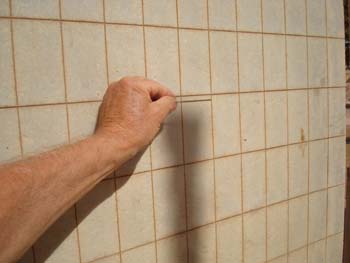 |
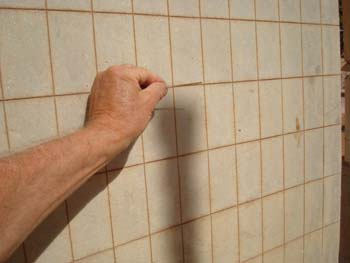 |
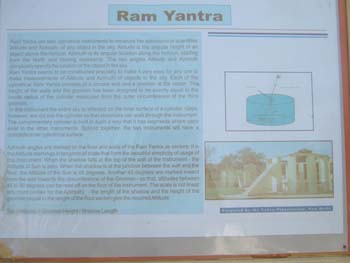 |
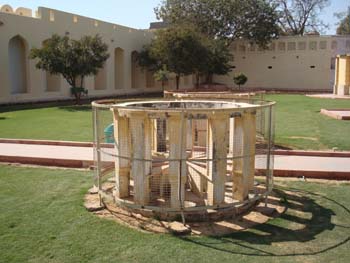 There are also two smaller scale versions of this instrument nearby. They were surrounded by a scaffolding fence at the time of my visit |
| This page written and maintained by Internetworks Ltd |
|